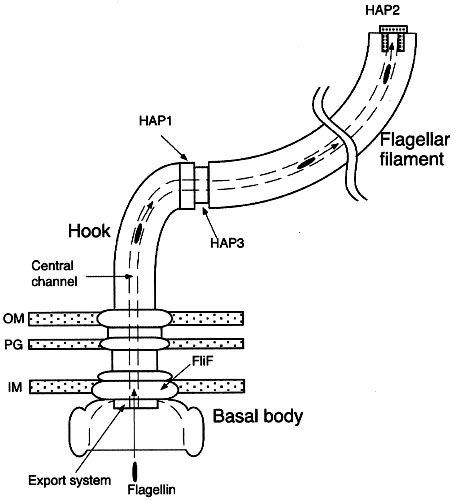
According to him, “the probability of assembling such an object can be calculated by determining the probabilities that each of its components might have originated by chance, that they might have been localized to the same region of the cell, and that they would be assembled in precisely the right order”, probabilities that he calls Porig, Plocal, and Pconfig.
His calculations find the probability of the flagellum assembling by chance to be 10-1170, a probability far below what he considers a threshold for highly improbably events or “universal probability bound”. Thus, argues Demsbki, the flagellum must be the result of an intelligent designer’s intervention.
However, in his article “The Flagellum Unspun”, biologist Ken Miller points out that Dembski’s calculations miss several important aspects of biological evolution. Most importantly, as Miller points out, calculations treating the flagellum as a “discrete combinatorial object” only show that it is highly unlikely that the parts of the flagellum assembled spontaneously. No one has argued, however, that the flagellum was formed this way. Evolution works by using pre-existing structures rather than spontaneously creating entirely new ones.
In the case of the flagellum, the proteins of another bacterial system — the type III secretory system, which allows the bacteria to translocate proteins directly into a host’s cytoplasm — are directly homologous to the basal portion of bacterial flagellum. This secretory system does not contain all 30 or so proteins that are present in the flagellum, yet this subset serves a purpose on its own. It seems likely, then, that the evolutionary pathway that resulted in the flagellum also includes the type III secretory system. The flagellum, then, is not irreducibly complex.
Miller ends his article by explaining the difference between acknowledging that nature reflects the higher purpose of a divine intelligence, and what the modern theory of “intelligent design” entails:
“Their views demand not a universe in which the beauty and harmony of natural law has brought a world of vibrant and fruitful life into existence, but rather a universe in which the emergence and evolution of life is made expressly impossible by the very same rules. Their view requires that the source of each and every novelty of life was the direct and active involvement of an outside designer whose work violated the very laws of nature he had fashioned. The world of intelligent design is not the bright and innovative world of life that we have come to know through science. Rather, it is a brittle and unchanging landscape, frozen in form and unable to adapt except at the whims of its designer.”

